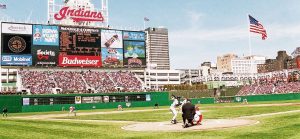
Sustainability in Northeast Ohio (part 2)
Better than it was, not where it needs to be
by Richey Piiparinen (2016)
for Teaching Cleveland
The link is here
Richey Piiparinen passed away in early 2025. This bio is from his obit:
Richey was an accomplished Author, writer and urban affairs researcher. He worked at Case Western Reserve University and Cleveland State University as the Director of Center of Population Dynamics., part of the Levine College of Urban Affairs. Richey recently published a book titles “Octopus Hunting” a book of essays linking the author’s fight for life and a city’s fight for life.
Richey appeared in “The Daily Beast, The Plain Dealer and Huffington Post. His research has been highlighted by the Wall Street Journal, CBS Evening News, NPR’s Morning Edition to name a few.








